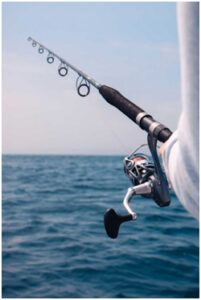
Long ago, where only class attendance was important to avoid the missing practice; The Instructor figure was a highly respected place. They were so few that on many occasions they should be substituted by the most advanced student present there to cover them in emergencies or other personal troubles.
The atmosphere was strictly martial and the sporting side non-existent. Time changed that distant reality turning that martial environment with undeniable personal introspection, into one almost exclusively for sportive goals. Those who are not included in this target perhaps because they’re not interested, well … they … must adapt to work as filler.
The shortage of instructors in the first years of the activity has been followed by the profusion of people who are dedicated to teach the art according to the current circumstances and demands. However, this change in objectives has not prevented the orthodox evaluation of the adepts from continuing.
These are regulated by practice times to meet and theory and practical student’s evolution, whose favorable result will be exhibited with a new color on their belts if it is a Gup or with a change of number and design of the dobok if black belts we were talking about. In both cases and unlike that distant time, the certification of the promotion is not long in coming. The process that it is not so much different with those used in the past, has more complex institutional and organizational details than then.
The testing boards uphold a diagram that has been internationalized and allows students and Instructors to enjoy a pre-established order and recognition of the effort done. Obviously, this whole global system is supported by the fees that the students will pay to justify the time invested in the evaluation of the current army of students. They must inexorably be scrutinized in order to grant the deserved new step in their evolution.
The Assistant Instructor (1st to 3rd Dan) and once fulfilled the requirements imposed by the system will access in his last step (3rd Dan), to the grade of 4th Dan. This place and unlike previous promotions, will allow them to become in Instructors if they are dedicated to teach. With the completion of a course and an administrative procedure, they will access the coveted place of International Instructors. This status will allow them to chair their own testing boards and promote students outside and within their country of residence up to half their rank (a 4th Dan will be able to promote up to 2nd Dan and so on). From then on their evolution as an Instructor can turn them over the years into Masters or Grand Masters of Art.
Sometimes the place occupied by the latter is often misinterpreted. These places are directly related to the perseverance dedicated to the pedagogical task and to promote Instructors and schools’ foundations.
There are those who abandon their regular pedagogical career and their direct contact with the students to dedicate in adding other’s instructors or their assistants, becoming without being, a kind of «distributor or godfather» of art.
This procedure, which is not new, has allowed the spurious commercialization of art and the firm distrust in its institutionalization. The instant consequence was the atomization of the international governing body, which occurred in the immediate aftermath of the death of its Founder and President, Gen. Choi Hong Hi.
The once respected figure of the instructor has been blurred by the constant passage from one entity to another, from one Master to another. This rattle and the lack of institutional formality carry on the coming and going of the students as a bundle of non consulted hostages that are used as a currency of exchange when negotiating utilities.
Imitation and repetition is the form that a disciple must take in front of the teachings. That is why a Master is committed to showing what he is teaching. If this incontrovertible fact does not occur because the master no longer has a regular pedagogical relationship with the students except on random occasions, an inevitable question arises: who is then the one who really teaches the student?
The Instructor lives on monthly dues he collects from his students and the administrative work involved in evaluating them and the respective certifications that must be issued. And the one who has abandoned the regular condition of teaching, how does he do it?
In a conversation out of the record, a current «grand master» who no longer has a regular teaching relation with the students, answered that question with: well… you know….fishing Instructors.
SGM Ricardo Desimone
To be aware read the previous notes